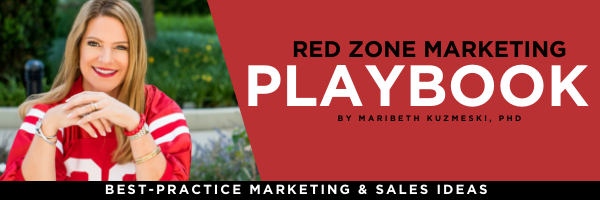People Don’t Have Short Attention Spans. It’s the Content that Isn’t Interesting.
The truth is out! Humans don’t actually have shorter attention spans than goldfish, it’s just that most of the content we’re consuming isn’t interesting enough to hold our attention.
So what’s with the goldfish?
In 2015, the internet erupted with the statistic that humans have an 8-second attention-span. Less than that of a goldfish! Well, the media latched onto this statistic and ran with it. Frankly I did too!
Snackable content became all the rage online and social platforms continuously shortened content clips. Anyone remember Vine? The American short-form video service where users could only share six-second-long video clips? The “news” about attention spans caught so much buzz it was reported that even the NBA was considering shortening games due to audiences’ shortening attention spans.
It was later uncovered this statistic was fabricated and perpetuated by an SEO site claiming to be an academic institution. As you may have guessed, humans do not have goldfish-level attention spans, and there is plain-as-day social evidence to suggest the contrary. Ever binge-watched a TV show? Read a book cover-to-cover?
In 2017, Deloitte released a report saying that 73% of people had binge-watched a show, meaning they were consuming over 5 hours of content in a single sitting. Clearly, humans have the capacity to pay attention to things for long periods of time.
So, what’s the deal?
Different Types of Attention & Storytelling
Turns out that there are different types of attention—selective attention, divided attention, intentional attention, and sustained attention, to name a few. When you’re browsing social media, you’re paying selective attention to one thing while scrolling through to another. When you’re driving and listening to a podcast, you’re dividing your attention, or rather switching attention from one source to another intermittently. And when you’re in deep work or a state of creative flow, you can fall into sustained attention. Advertisements are designed to get you to jump out of whatever you’re intentionally paying attention to so you can unintentionally pay attention to their ad.
But, scientifically speaking, one of the most tried and true tools for sustaining our attention is storytelling. This is due in part to a feeling of immersion, or being completely captivated by something you’re reading or watching, so much so that stopping feels like being snapped back into reality.
The Problem Isn’t Attention-Span, it’s Interest-Span.
While this isn’t a piece on the power of storytelling (because we have gone over that in my article here), it just goes to show that we are interested when the content is interesting. If it isn’t, we move on our merry way.
We have to create better more interesting content. If there are shows out there that can hold our attention for 7-10 hours in a single day, surely we can do better than eight seconds.
Here are a few steps to help you get started.
- Check the Bounce Rate on Your Website
One of the main KPIs that we check in digital marketing is a website’s bounce rate. A website’s bounce rate reveals the percentage of users who land on a website and leave without visiting another page. In other words, it tracks the number of users who landed on your website and (1) didn’t find what they were looking for or (2) found it uninteresting enough to leave.
Your goal should be to see this number trending down. This can be accomplished by making some updates to your site, including having a captivating hero image, a clear and concise tagline, and clear navigation pages, to start. But beyond those logistics, it should invite the reader into your story, which gets them to continue reading down the homepage and/or clicking through to other pages.
How do you achieve this? With your messaging, your website aesthetic, and of course, clear calls to action (CTAs).
- Check the Views, Likes, and Shares You Get on Social Media
These are the metrics that will reveal how engaging your posts are. You want your posts to be engaging for two reasons: (1) it shows that your content is interesting and people are paying attention to it and (2) social media platforms favor content that people like. In other words, LinkedIn (or Instagram or Facebook or Twitter) will share content in the feed that gets attention, because their goal is to keep your attention on their platform for as long as possible. So, the more interesting your content, the higher each platform will post it in your audience’s feed. Greater exposure = Win!
- Ask Yourself: Is This Interesting to Your Audience?
Whether it’s an email, social media post, video, webinar theme, podcast topic, or holiday greeting you’re sharing with your audience, take a step back and ask: “Will this be of interest to my audience?” Now, ‘interesting’ is subjective term, I understand. But, even so, we can see if the post checks off one or more of the following boxes:
- Will this information help my reader in some way?
- Will this information educate my reader on something of importance to them?
- Will this information build a bond between the reader and myself?
- Will this information make my reader smile, laugh, or elicit a positive entertainment response?
- Will this information help them achieve a goal?
- Will this information help transform their mindset?
Interesting content will often accomplish one or more of the above, making it worth a reader’s attention. If your content doesn’t speak to any of these, don’t go and scarp the whole bit. Instead, see where you can add in a tip that might help them or include a tool that might help them accomplish a small goal.
Think of interesting content as breadcrumbs. If you can get your reader to pick up the breadcrumbs you’re leaving, you’ll keep them coming back for more.
Put a Ban on Boring Content
Putting out boring content is like being the guy at the party no one wants to talk to. And the consequence isn’t just that you have a pretty lame time at the party, it’s that you’re missing out on making meaningful connections with the people who could really benefit from your services. It’s time to stop blaming a truncated attention-span and start making content worth stopping for.
Maribeth Kuzmeski, PhD, President of Red Zone Marketing, is a marketing strategist, advisor to financial services companies, bestselling author of seven books, and a professional speaker rated as a Top 25 C-Suite Speaker as seen in Meetings & Conventions Magazine. She speaks on topics including marketing, branding, sales, and customer service.
Recent Articles:
How to Get Your Employees to Quit Quiet Quitting



